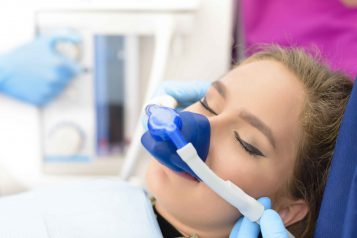Dr. Sara S. Cummins has a long history of working with her hands and experimenting with color, symmetry and design. She began her college career studying fine arts with an emphasis in painting, but became drawn to the fusion of art and science she found in dentistry. As she neared graduation from the University of Louisville School of Dentistry in 2003, Dr. Cummins began construction of her first practice. She had a clear vision of her philosophy of care, which integrated clinical excellence, superior service, and an exceptional patient experience. Pursuing these core principles, Dr. Cummins’ practice has grown to two locations that focus on contemporary esthetic restoration, implant dentistry, 3-D CBCT imaging and analysis, and advanced periodontal therapies. Her knowledge, skill, and eye for aesthetics have created some of Louisville’s most beautiful smiles.
 Photo Credit: Shutterstock
Photo Credit: Shutterstock
Have you been experiencing an uncomforting pain in your jaw structure? There is a high possibility that you are suffering from TMJ or TMD symptoms. Haute Beauty Smile Expert Dr. Sara Cummins discusses how Botox, one of the most popular forms of TMJ treatment, can aid in the relief of TMJ and TMD symptoms.
Haute Beauty: You offer TMJ treatment to relieve TMD symptoms. Can you talk about what those symptoms are and how the services and recovery process is?
A lot of people come in and say that they have TMJ, temporomandibular joint. Everybody has a TMJ. Everybody has two of them; there is one on each side. What they are trying to say is that they have a TMD, which has a temporomandibular disorder. Clenching and grinding are sometimes mistaken for a TMJ problem, and it is not. A TMJ problem is pain or a problem with function in the joint. If there is popping, clicking, or crunching sounds in the joint space, that is a temporomandibular disorder. Those are the symptoms that we typically will treat. If somebody comes in and they have difficulty in opening or closing, pain upon chewing, pain closer to the ear, or in facial muscles that support the jaws, we treat them.
There is the long-term management of TMD and there is short-term management. The short-term would be for acute flare-ups. Once you have this temporomandibular disorder, there is no cure for it. It is like having a knee problem. Occasionally, the knee flares up, but it is okay most of the time. When there is an acute flare-up, pain opening or closing, or difficulty chewing, our protocol includes four things:
Splint therapy, which is a bite guard or a nightguard. What that does is it takes the pressure off the joint to allow the tissues to heal and to reduce the inflammation.
The second thing that we incorporate is anti-inflammatories. If there is swelling in the joint space and usually if there is a pain in the joint, there is swelling, so anti-inflammatories reduce that swelling, and therefore reduce the pain.
Following a soft diet until the symptoms subside. You want to reduce the amount of function that the joint is having to provide. A soft diet, soft foods, and protein shake allow that joint to heal.
Then fourth, sometimes we will introduce a muscle relaxer if the TMD, which is the pain or swelling in the joint, is associated with parafunction. Parafunction is bruxism, clenching, or grinding. If it is associated with that, the muscle relaxer will frequently reduce those muscle contractions at night while the patient is sleeping to allow for some healing. It takes the pressure off the joint. Recently, we have started to do more and more Botox. We do a lot of Botox injections in the masseter muscle, which is the muscle that attaches the lower jaw to the upper jaw because that is constantly fighting to put the teeth together.
 Photo Credit: Shutterstock
Photo Credit: Shutterstock
HB: What is the impact of using Botox? How has that enhanced the dentistry industry and helped with TMJ?
It is a fantastic auxiliary tool to use for these cases. We do injections in the masseter muscle, and it reduces the force of the contraction. It does not prevent people from eating, but if they clench and grind and that is contributing to a TMD, Botox is a great way to reduce that to minimize the trauma in the joint. It reduces the force by paralyzing some of the muscle fibers but does not paralyze the entire muscle. It weakens it slightly and over time, people that do clench and grind develop hypertrophied masseters. On the lower border of their jaw, the muscle is pronounced, and they get a very square look in their lower jaw. Over time if Botox is done consistently, that muscle softens, and their jawline will soften. It is a nice aesthetic improvement, especially in women.
HB: What is something patients should know about TMJ and Botox?
When somebody determines that they have a problem in the joints when they are struggling with pain, or a lack of function in the joint, what we need to know to treat them appropriately is if it is associated with parafunction. Parafunction is any kind of function that is beyond what you have to do two to three meals a day to sustain your nutrition. Is it due to the clenching and bruxing or is this due to something else such as trauma? If it is due to clenching and bruxing, then that is a perfect candidate for Botox. Sometimes we are injecting all over. I am going into the temporalis muscle or the back of the neck to do injections there. That can be used to treat the clenching and bruxing, which can even tie into migraines.
For more information, visit Dr. Sara Cummins's social media:





















